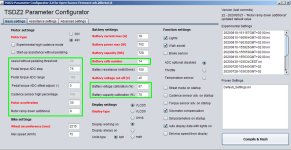Heisenberg60
1 mW
- Joined
- Sep 5, 2020
- Messages
- 16
dameri said:jtsavola said:dameri said:jtsavola said:See few pages backwards. No fix yet...
Have you tried this? https://github.com/OpenSource-EBike-firmware/TSDZ2-Smart-EBike/issues/139#issuecomment-678766584
Unfortunately my skills are very limited. I can follow step by step guide but that's it
Here is a very good guide https://github.com/OpenSource-EBike-firmware/TSDZ2_wiki/wiki/Development (I think that is step by step). It has quite a lot to do when you have to install many programs. The help was originally made for OSX, but should also work on Linux and Windows. Personally, I use Linux and I managed quite easily even though I have no experience with programming.
I try next week if I manage with Windows at work if I have spare time.
I will get a new light https://herrmans.eu/products/front-lights-4147/e-bike-10035/h-black-pro-e/hopefully next week and there may be a problem with the engine.
Then I can to test if the new hex file which I made works with TSDZ2.
I have now lights which came with the TSDZ2. The head light is very poor and tail light stop working at all. I think there is problem with internal connections. TSDZ2 works with these lights with no problem.
great that`s what i was looking for
i will give an update as soon as i mange to update my firmware (might take until next, i have a lot of stuf to do)
Did some one have the same problem as i do with the temperature sensor ?
My bike won`t start with the sensor intalled.


